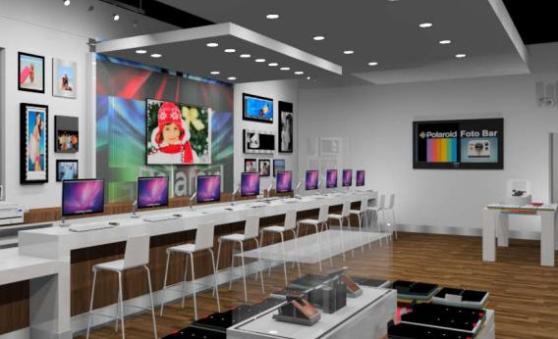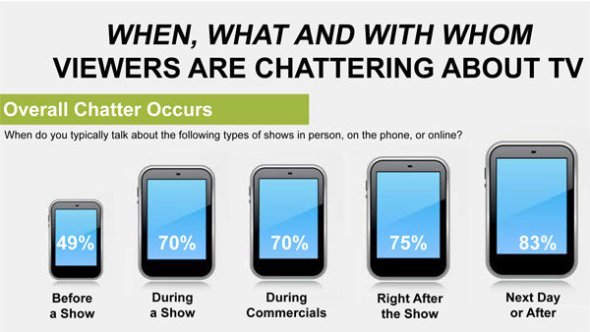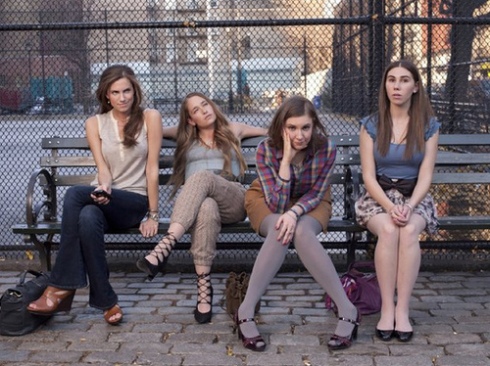“How Chatter Matters in TV Viewing,” a new Nielsen research study for the cable industry association CTAM, reveals a strong connection between Facebook posts and TV viewing. Heavy social media users are proving to be more influential than journalists, celebrities or even TV networks themselves. Some highlights from the study include:
- About 49% of women surveyed and 43% of men said they began watching a show because their Facebook friends were taking about it on the social network.
- Twitter conversations prompted more men (16%) to start tuning in than women (14%).
- Viewers 18 to 34 were the most influenced by social chatter. Among this group, 54% said they were enticed to tune in to a show because of Facebook comments, and 21% said viewing was influenced by tweets.
- Nearly 50% of viewers 35 to 49 years old said they were intrigued by comments on Facebook, while 12% said their interest was piqued by Twitter remarks.
- 70% of people said they discussed TV in person, on the phone or online during commercials — and also while watching the show.
- Live sporting events were the most popular types of TV programs to discuss in real-time, while discussions about TV comedies, movies, dramas and news shows peaked the following day or later.
According to CTAM Chief Executive Char Beales:
“This snapshot shows social media is influential for all viewers, particularly the 18-34 year olds. Networks need to provide many ways for viewers to discover and talk about their shows — second-screen apps, fan sites, network sites and by seeding social media — find out what works best for their audience, and take advantage of the new opportunities to spur conversations.”
The findings revealed in Nielsen’s study aren’t of any surprise to me, but it’s interesting to have data to back up the connection between traditional and new media. I know that social media has definitely influenced my own TV viewing habits. I remember that while skipping out on the first season of Downtown Abbey, the chatter among my Facebook and Twitter friends made me feel like I was missing out on the party every Sunday night it aired. Social media undoubtedly turned me into a loyal viewer at the start of the second season. And when it comes to real-time discussion, for the last two years or so, I’ve sat through the Super bowl, the Oscars, the Grammys, various State of the Union speeches, and other live events with my smartphone in hand, texting and tweeting away.
My own TV viewing habits have become the norm, and social TV companies such as GetGlue, Bluefin Labs, Miso, and Trendrr get that. Nielsen and Twitter have also gotten in on the game. The future of the space is yet to be determined, but it can’t be argued that the audience is there – the massive number of online users contributing to conversations surrounding live TV proves it. Networks have a lot to work with in terms of how they can creatively utilize cross-platform media to engage with online audiences, whether it’s via social media, blogs, or downloadable apps. The question is -– will they?
Filed under: Culture, Data, Facebook, Marketing, Television, Twitter | Closed
Tags: branding, culture, marketing, millennials, nielsen, research, social media, social networks, social TV, trends, tv
When it comes to social media marketing, most major brands have Facebook and Twitter down, but are a bit more challenged when it comes to Instagram. As of a few months ago, it was reported that 40% of the top 100 brands are utilizing the app for marketing purposes. But how many get it right? Business Insider had a great article this week showcasing the top 20 “brand masters” of the photo sharing social network.
“Some brands, like American Express and Burberry, excel on the all-picture site, while other companies fail because they treat the platform like an online catalogue for showcasing their products… For example, Burberry, unlike its high-end competitors, uses its account to post cool images of London, where the company is based, along with backstage pictures from photoshoots. It posts the occasional merchandise image, but does not flood its account with boring pictures of clothing.”
Brands such as Intel, Virgin America, Sharpie, General Electric and Red Bull are also connecting with fans in visually creative ways. Instead of concentrating on the product, they’re focusing on the lifestyle behind the product.
Filed under: Branding, Marketing, Social Media | 3 Comments
Tags: branding, instagram, intel, marketing, photography, red bull, sharpie, social media, social networks, virgin america
Last week it was announced that Hilton Hotels and Resorts and Onion Labs, the creative services arm of the publishing company and popular satire news website the Onion, teamed up to create Hilton’s newest online marketing campaign to lure in young leisure travelers. Taking a humorous approach, the campaign is centered around a website called the “Hilton Urgent Vacation Care Center” that lets users diagnose their vacation ills and receive customized prescriptions for visits to Hilton hotels to cure them. The site also urges visitors to “stop vacationitis before it spreads,” and to view and share the disease’s 14 symptoms, illustrated by Onion Labs’ cartoons through social media. Symptoms include “acute cancelitis,” “commuteritis,” “cubiclophobia” and “yellow Post-it fever.”
According to Andrew Flack, Hilton’s vice president for global brand marketing, the hotel chain is “particularly targeting working professionals. It’s becoming harder and harder to switch off work, harder for people to think about and plan vacations. This time of year is popular for people to plan vacation travel. When they come through Christmas, they think ahead for the year, think about where they might go.”
What’s most interesting about this campaign is the partnership between Hilton and the Onion. While the Onion established itself as a leading web publisher long ago, the existence of its own in-house and marketing agency created to serve leading brands is less known to the general public. Other brands that have used Onion Labs since its inception late last year include Microsoft, Dodge, EA Games, Corona, and Coke Zero. According to the New York Times, Hilton approached The Onion because “they’re experts at making fun of life.” The Onion’s loyal audience, made up primarily of 18 to 45 year olds, is a potential up-and-coming travel group younger than Hilton’s core demographic. Onion Labs’ partner Grant Jones said:
“Some of our most popular satirical editorial content in The Onion surrounds the workplace and everyday stresses, so it’s been exciting to work with Hilton Hotels & Resorts to illustrate diagnoses of vacation blues around the world. The cartoon memes aim to inspire workers to fill their ‘prescriptions’ with a much-needed break from the office.”
I appreciate Hilton’s attempt at utilizing humor in their campaign, especially knowing just how strong comedy has resonated with young adults in recent years with the advent of new websites, podcasts, Twitter feeds, and cult TV shows. Many of the major players within these formats have had ties with successful branding partnerships. The concept of “vacationitis” is a bit tired, yes. We’ve heard it before. But Hilton should be lauded for its creative approach to this campaign and its “outside the box” partnership with the Onion.
Filed under: Branding, Marketing | Closed
Tags: branding, comedy, culture, humor, online marketing, the onion, travel, youth marketing
Teens and the Social Scene
Keeping up with teenagers and the way they use technology – specifically social tools – can be challenging, though never boring. Today there’s some informal survey findings going around online, created by startup investor and cofounder of Posterous, Garry Tan. His questionnaire, inspired by Branch cofounder Josh Miller’s recent blog post on how his 15 year old sister uses the internet, gauged the social media habits of over one thousand 13- to 25-year-olds. While his conclusions are in no way an exact reflection of teen tech trends – there are certain regional behaviors to account for, and the survey was 60/40 female to male – they do provide some insight into the social landscape of younger users.
The most surprising finding of the survey is that Tumblr topped the list of most popular social network. Tumblr was used regularly by 59% of total respondents, compared to Facebook’s 54%. By comparison, just 5% of online adults are using Tumblr, according to the Pew Internet and American Life Project. But this doesn’t mean Facebook is on its way out. Tan found that Facebook usage is standing strong with teens, despite constant reports of its demise among younger audiences.
Usage levels were higher among 13- to 18-year-olds than 19-to 25-year-olds for every social network, especially for newer photo-based services such as Snapchat and Instagram. Two things to ponder here: Are younger teens using social networks more because of their inherent socialness combined with more free time and less responsibilities? Or are their higher usage levels due to their deeper roots as digital natives? I imagine it’s a combination of the two. If anything, Tan’s survey does conclude that no matter how crowded the social ecosystem is, if the product fits, younger audiences always seem to make room for new tools and behaviors.
Filed under: Culture, Data, Facebook, Social Media, Twitter | Closed
Tags: facebook, instagram, millennials, snapchat, social media, social networks, teens, trends, tumblr, twitter
 This week at the 2013 Consumer Electronics Show, Polaroid announced its goal to bring tangibility back to photography, with the launch of Polaroid Fotobar, a chain of retail stores where consumers can easily print out their favorite images from their mobile phones.
This week at the 2013 Consumer Electronics Show, Polaroid announced its goal to bring tangibility back to photography, with the launch of Polaroid Fotobar, a chain of retail stores where consumers can easily print out their favorite images from their mobile phones.
The company has partnered with startup Fotobar in order to open 10 locations across the country before the end of 2013, with the first store scheduled to open this February in Delray Beach, Florida. The Polaroid-style printouts we’ve become so familiar with are set to start at about $15, with immediate pickup availability, while prints with special framing and matting requirements will ship in a matter of days.
I have two initial thoughts on this Polaroid’s new venture: First, I question whether or not consumers will balk at the $15 price tag for one image. If audiences are looking for tangibility, there are plenty of cheaper options out there. Chain drug stores such as Walgreens and CVS offer will print a single image for less than a dollar, as will online services such as Snapfish and Shutterfly. But Polaroid seems to be going for an artisanal, or perhaps even “Apple-like approach. Polaroid, like Apple, believes that consumers won’t mind paying premium prices for a high quality, personalized service. Images can be edited and customized on the spot, and trained employees will be available in-store to assist customers with the printing process.
Secondly, it’s important to remember that the switch from developing photographs to simply uploading them onto Facebook or iPhoto only happened a few years ago. Most of us can still remember what it’s like to page through a photo album, frame a photo for a desk or shelf, and give a photograph as a gift. These photographs usually took on much greater permanence than the digital photos we now share on Facebook, Twitter and Instagram. What we gained in instant gratification with the takeover of digital and mobile cameras, we lost in permanence and tangibility. I do believe that a certain sect of younger, digital, creative consumers – consumers who use Instagram, but who would most likely never use Walgreens, CVS, Snapfish or Shutterfly – will be attracted to the option of returning to physical photographs for certain images. While the immediacy that the Polaroid experience once offered is longer novel, with its revival of tangibility, the company does have the potential to become relevant once again.
Filed under: Branding, Culture, Marketing, Offline | 1 Comment
Tags: branding, instagram, marketing, photography, polaroid, retail
Where the Girls Are
If you’re an urban dwelling, twentysomething female like myself, you’re likely well aware that HBO’s second season of Girls premieres in t-minus five days.
Interestingly, the marketing surrounding Girls’ new season is much more aggressive compared to the show’s debut last year. While the first season of Girls was framed as a TV show illustrating a refreshing tone of authenticity and lack of consumer aspiration that’s so often seen in female-centric media, this year the show is being promoted through partnerships with female skewing brands such as blow-dry salon Drybar, premiere spin class SoulCycle, and Urban Outfitters.
Last week Girls fans were offered a free blowout at Drybar for three days only. The online promotion was so popular that it crashed the salon’s website. SoulCycle is offering a series of “Free Girls” events in New York and Los Angeles, during which participants will spin to the Girls theme song. And Urban Outfitters is promoting the show with “character-inspired nail art appliques and codes to download episodes from the first season,” plus social media contests that will award the winners “free rent for a year and gift cards to Urban Outfitters.”
While I can’t quite picture Marnie, Jessa, Shoshanna or Hannah patroning any of these places, Drybar, SoulCycle and Urban Outfitters do fit the bill for brands that aspirational young/urban/trendy females might align themselves with. However, to be able to pay $40 for a single spin class, I’m guessing these females likely have better paying jobs than Hannah does.
Filed under: Branding, Culture, Marketing, Television | Closed
Tags: branding, girls, hbo, marketing, new york city, partnerships, tv

There’s been so much discussion about how our personal data is being tracked and collected online lately, that it’s easy to forget how valuable our “real life” movement and behavior can be. The New York Times has a really interesting glimpse into what the not-so-distant future of offline data collection might look like.
“Imagine Walt Disney World with no entry turnstiles. Cash? Passé: Visitors would wear rubber bracelets encoded with credit card information, snapping up corn dogs and Mickey Mouse ears with a tap of the wrist. Smartphone alerts would signal when it is time to ride Space Mountain without standing in line. Fantasyland? Hardly. It happens starting this spring.”
Within the next few months, Disney theme parks will be introducing a new program called MyMagic+, which uses spending trends and location data to more closely monitor park patron behavior. While the program will be used to increase personalization towards users, it also raises substantial privacy concerns – especially for children. Nevertheless, it does provide a fascinating look at what the future of branding entails.
Filed under: Branding, Culture, Data, Marketing, Offline | Closed
Tags: branding, culture, data, disney, marketing, privacy
New Year, New Updates
Took a break from updating for a while, primarily because I’m now writing for digital research firm eMarketer full-time. Some changes: I added a list of all of the reports and articles I’ve published during my time at eMarketer under the “writing” section of this site (for copies or samples, please contact me, as these are protected documents). I also want to use this space to document my thoughts on culture, trends, marketing, branding, research, etc. I have a lot of them, and it’s time to get them down on “paper.”
Filed under: Uncategorized | Closed
Filed under: Apps, Digital Music, Social Media | Closed
Tags: apps, digital, discovery, iphone, music consumption, social media, streaming
 Reposted from Hypebot.com.
Reposted from Hypebot.com.
Love them or hate them, it’s tough to deny that online music review outlets Pitchfork Media and Drowned In Sound are tastemaking kings when it comes to influencing trends in new music. Combining long-form reviews, analysis, and commentary with user-friendly number ratings, both Pitchfork and Drowned In Sound provide one-stop, easily navigable guidance in the often-daunting world of new music and up-and-coming artists. Pitchify makes the process of discovering new music even easier, at least for those with access to Spotify. Pitchify combs through Pitchfork and Drowned In Sound for albums that have received a rating of 8.0 or above, automatically generating links to these albums available within Spotify.
Pitchify creator Anders Austad explains, “Lots of albums are reviewed every day, and thousands of tracks added to Spotify every week. Pitchify tries to sort through the pile, throw away the Gagas and the Nickelbacks, and present you with the very best that Spotify has to offer.”
Continue reading ‘Pitchify: Spotify’s Music + Pitchfork’s Taste’
Filed under: Apps, Digital Music, Music Blogs | Closed
Tags: apps, iphone, music, music consumption, spotify






You must be logged in to post a comment.